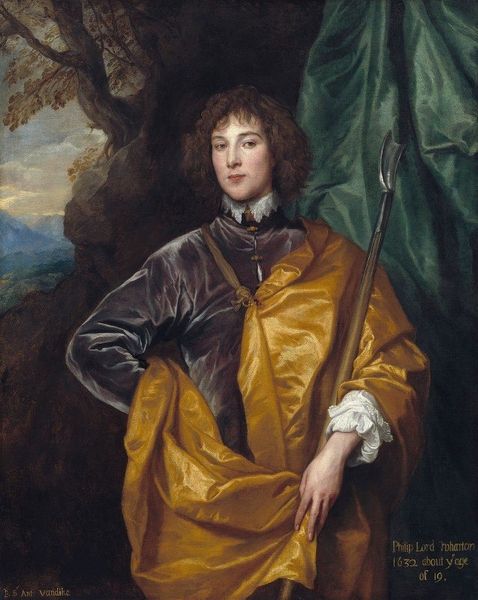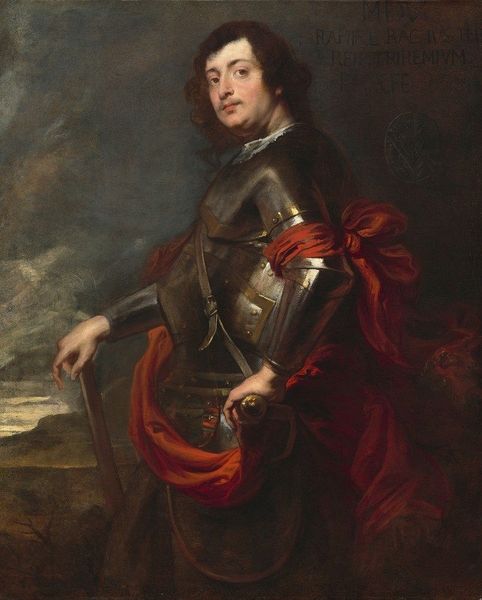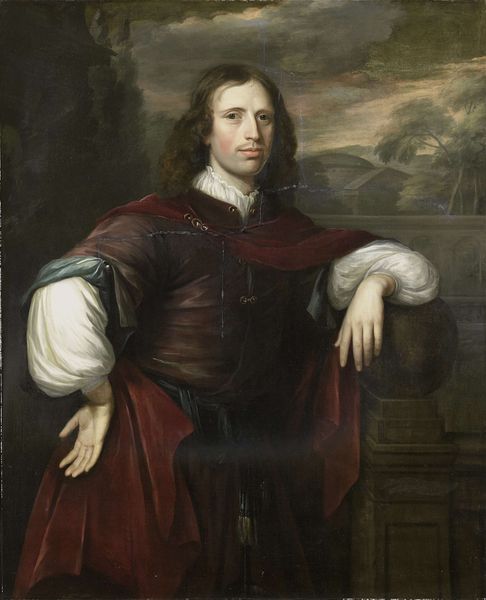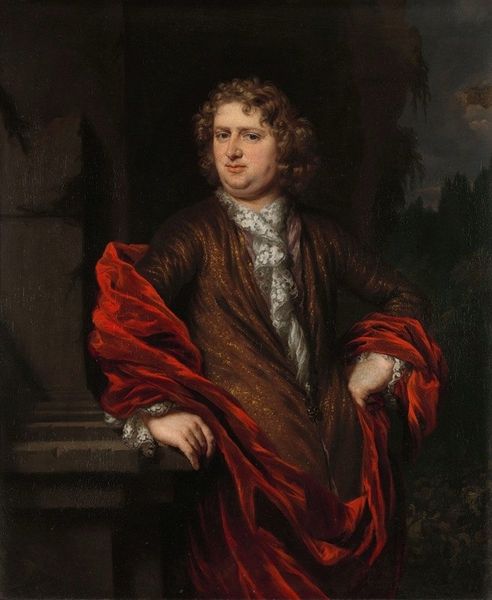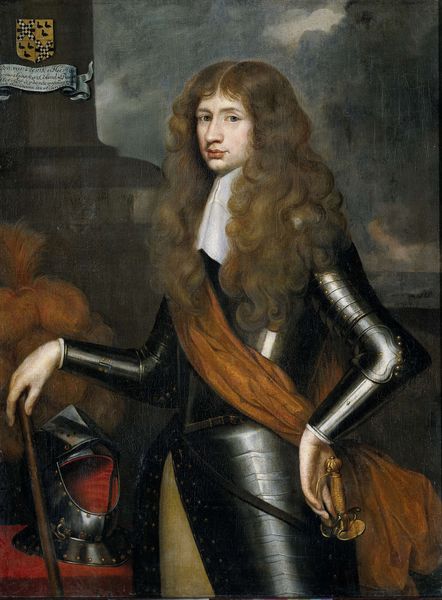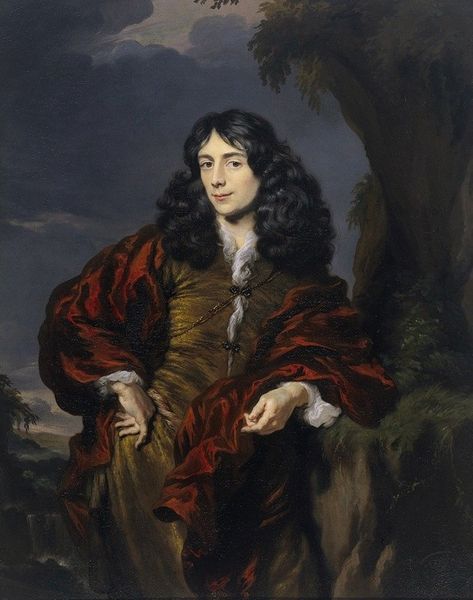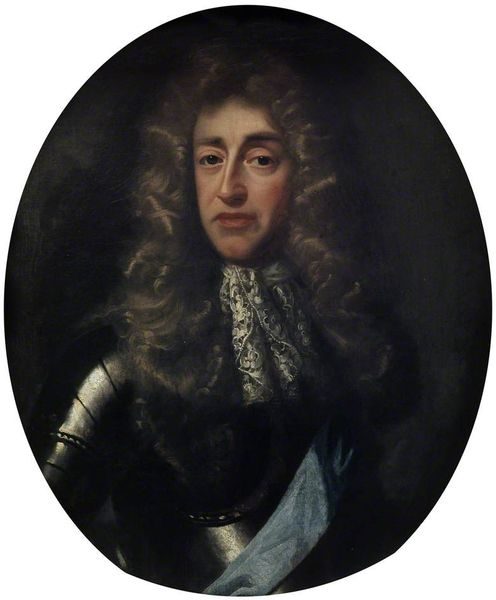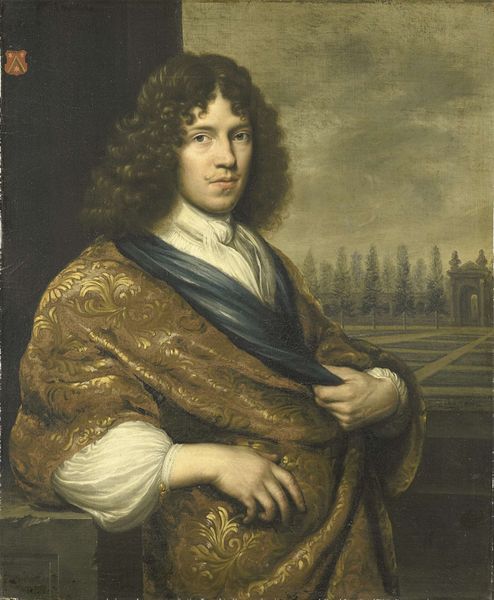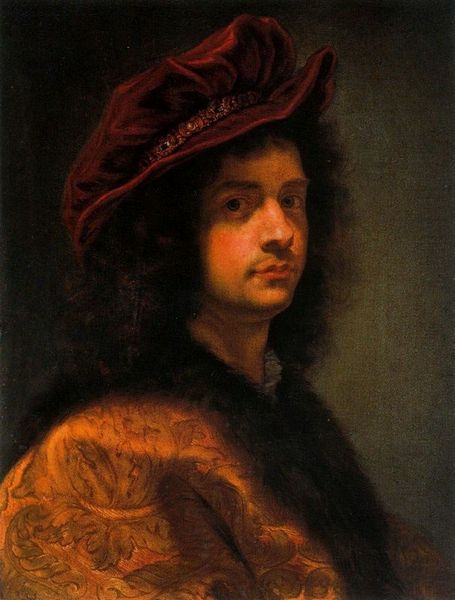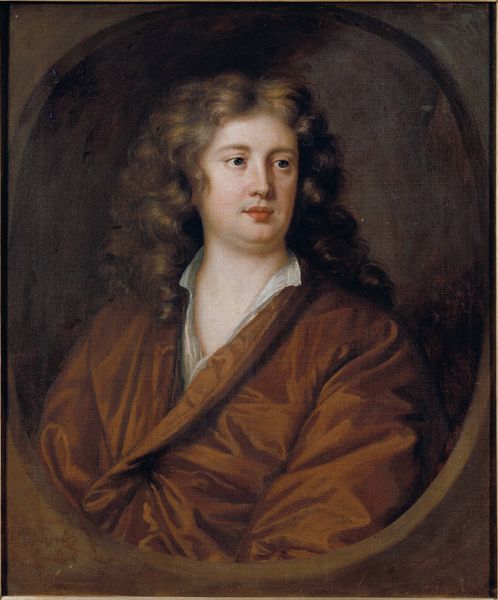
painting, oil-paint
#
portrait
#
baroque
#
painting
#
oil-paint
#
figuration
#
history-painting
#
academic-art
Dimensions: 121 x 96 cm
Copyright: Public domain
Curator: Here we have Anthony van Dyck's "Portrait Of Philip, Lord Wharton" from 1630, an oil painting currently held in a private collection. What strikes you most about it? Editor: Well, right off the bat, he seems... unsure. There's a tentative quality about him. Almost as if he is cosplaying someone powerful but doesn't fully believe it. What do you read in this historical figure, our Lord Wharton? Curator: Van Dyck, of course, worked extensively in the Stuart court, shaping how power presented itself visually. That slightly melancholic air you notice? It's a very calculated presentation. Notice the loose drape of fabric – clearly luxurious but worn casually to signify effortless wealth. And the halberd – more a prop of authority than an actual weapon. Editor: Exactly! A prop! Like he's borrowing it for the photo. And those almost-too-perfect curls. The backdrop feels vaguely threatening. A shadowy forest; what kind of archetype are we working with here? A vulnerable man placed in a cruel landscape? Curator: In iconographic terms, we have a staged nature scene – a deliberate contrast to the artifice of court. It speaks to a yearning for a more "natural" state, an affectation quite common among the aristocracy, and very much embedded into Baroque symbolism. He becomes one with an ideal of the time. Editor: Ah, the noble savage! But gently civilized and draped in expensive fabrics. And is it me, or is the sunset almost foreboding? There is definitely an undercurrent of unease simmering beneath all that velvety finery. Curator: The chiaroscuro – that intense play of light and shadow – certainly adds to the drama and speaks to the uncertainties of the era, foreshadowing upheaval even amidst displays of power. Think about how soon the English Civil War follows. It's not all security and serene poses. Editor: It seems Van Dyck has managed to capture both the façade and the frailties beneath it. It's really quite effective, making us consider that image is curated. I'll definitely think differently about portraits now. Curator: Indeed. The symbols might speak to power, but the subtle imperfections betray the vulnerability of the individual, giving the whole a certain dynamism even now.
Comments
No comments
Be the first to comment and join the conversation on the ultimate creative platform.
